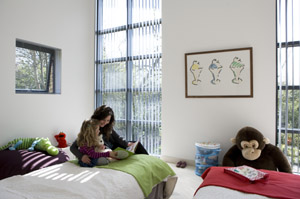Why successful window manufacturers use Pilkington Energy Advantage™
Benefits of Thermal Control Low-E
Glass
Handling 
The durable, pyrolytic low-e coating means that our thermal control low-e can be handled using standard float glass techniques. And, this durability means that it is also ideally suited for use in storm windows.
Cutting
Cutting Pilkington Energy Advantage™ is as simple as cutting ordinary clear glass. No special tools are needed. You may want to cut it "coating side up" to minimize marking from the cutting table edges. This marking will not affect the low-e properties, but might require special cleaning.
Virtually Unlimited Shelf-Life
Unlike soft coat low-e glass, it can be stored indefinitely with absolutely no loss in performance, minimizing inventory loss.
Washing
Automatic washing machines using clean hot water and detergents can be used just like on ordinary clear glass.
Tempering
Our thermal control low-e may be readily tempered or heat-strengthened, if required, because the durable pyrolytic coating can withstand the required furnace temperatures. Because all low-e coatings reflect radiant heat, when the coating side is up, the glass may require a longer furnace cycle to achieve uniform temperature. If rollers are clean enough, however, Pilkington Energy Advantage™ can be tempered coating side down at normal cycle times. As a post-temperable product, lead times and availability are significantly improved.
No Edge Deletion
Preparation time is reduced further since, unlike soft coat low-e glass, no edge deletion is required prior to fabrication.
Insulating Glass Units
Low-e coatings applied to two surfaces of an insulated glass unit significantly reduce the center-of-glass u-factor. Infrared heat is room heat generated inside a building. It is heat at or near room temperature. Adding a pyrolytic low-e coating to the #4 surface reflects infrared heat back into the house, reducing the amount of radiant heat loss through the glass.
Laminating
Pilkington Energy Advantage™ can also be laminated with polyvinyl butyl (PVB) with no adverse effects on performance, provided it is accomplished with the coating side out